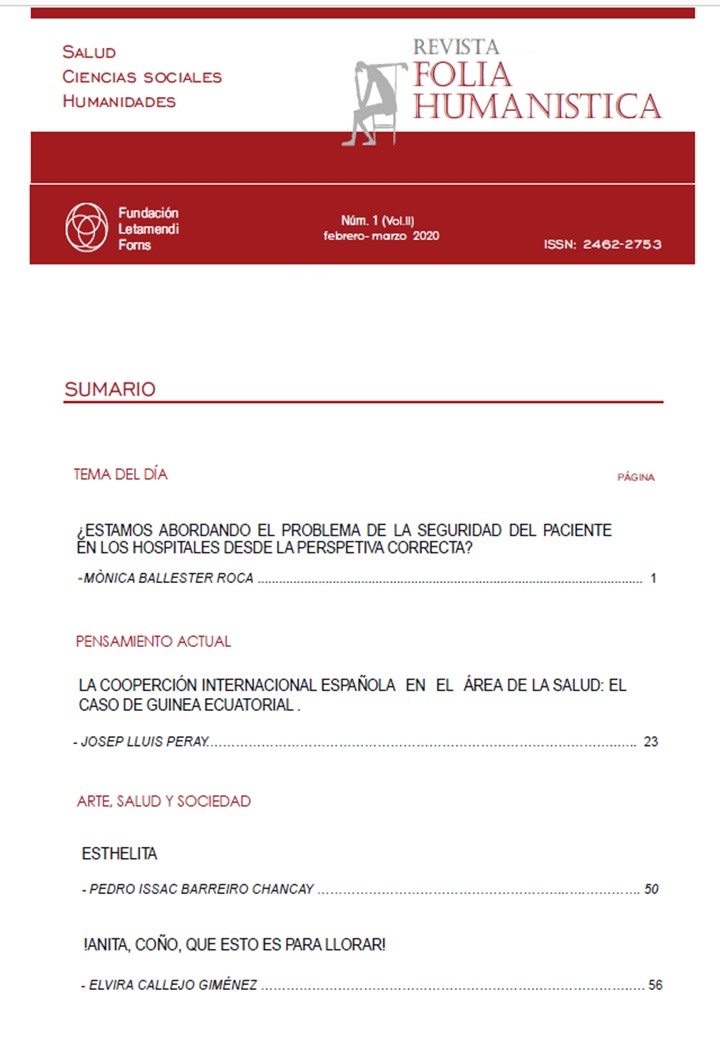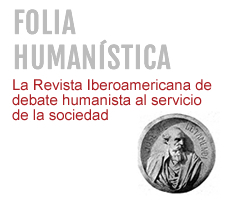¿ESTAMOS ABORDANDO EL PROBLEMA DE LA SEGURIDAD DEL PACIENTE EN LOS HOSPITALES DESDE LA PERSPECTIVA CORRECTA?
Keywords:
Patient Safety, patient Safety cultureAbstract
Recent studies show high rates of patient safety adverse events in hospital care. The approach has been the creation of patient safety units, promotion of a safety culture, implementation of voluntary notification systems or the application of safe practices, among others. But an analysis of the root causes of adverse events shows a series of organizational factors existing in hospitals that contribute to unsafe work and human error: staff training, supervision of doctors in learning, team communication problems, work overload, nursing training, ratios and shifts, continued medical care, care for the medical conditions of surgical patients, failures in the emergency response, non-compliance with procedures or over-occupancy of hospital beds. It is necessary that healthcare managers change their approach to these factors to reduce the impact of patient safety problems.
References
Kohn, LT, Corrigan J, & Donaldson MS. (2000). To err is human: Building a safer health system. Washington, DC: National Academy Press.
Estudio Nacional sobre los Efectos Adversos ligados a la Hospitalización, ENEAS. Ministerio de Sanidad. Madrid 2005 [consultado octubre 2019]. Disponible en: https://www.seguridaddelpaciente.es/resources/contenidos/castellano/2006/ENEAS.pdf
Estudio sobre la seguridad de los pacientes en atención primaria de salud (APEAS) Ministerio de Sanidad. Madrid 2008 [consultado octubre 2019]. Disponible en: http://www.mscbs.gob.es/organizacion/sns/planCalidadSNS/docs/estudio_apeas.pdf
Marco Conceptual de la Clasificación Internacional para la Seguridad del Paciente. Organización Mundial de la Salud, Geneva 2009 [consultado octubre 2019]. Disponible en: https://www.who.int/patientsafety/implementation/icps/icps_full_report_es.pdf
Hibbert PD, Molloy CJ, Hooper TD, Wiles LK, Runciman WB, Lachman P, Muething SE, Braithwaite J. The application of the Global Trigger Tool: a systematic review. Int J Qual Health Care. 2016;28:640-649. https://doi.org/10.1093/intqhc/mzw115
Pérez Zapata AI., Gutiérrez Samaniego M., Rodríguez Cuéllar E., Andrés Esteban EM., Gómez de la Cámara A., Ruiz López P. Detección de efectos adversos en cirugía general mediante la aplicación de la metodología «Trigger Tool». Cir Esp.2015;93:84–90. http://dx.doi.org/10.1016/j.ciresp.2014.08.007
Guzmán-Ruiza O., Ruiz-López P., Gómez-Cámara A., Ramírez-Martín M. Detección de eventos adversos en pacientes adultos hospitalizados mediante el método Global TriggerTool. Rev Calid Asist. 2015;30:166-174. http://dx.doi.org/10.1016/j.cali.2015.03.003
Consejo Ejecutivo, 144. (2018). Seguridad del paciente: medidas mundiales en materia de seguridad del paciente: informe del Director General. Organización Mundial de la Salud. Geneve 2018 [Consultado octubre 2019]. Disponible en: https://apps.who.int/iris/handle/10665/327527.
Taylor-Adams S, Vincent C. Systems analysis of clinical incidents. The London protocol [Consultado octubre 2019]. London, 2004 Disponible en: https://www.imperial.ac.uk/media/imperial-college/medicine/surgery-cancer/pstrc/londonprotocol_e.pdf
Reason J. Human error: models and management. BMJ 2000;320:768–70. https://doi.org/10.1136/bmj.320.7237.768
Govindarajan R, Molero J, Tuset V, Arellano A, et al. El análisis modal de fallos y efectos (AMFE) ayuda a aumentar la seguridad en radioterapia. Rev Calidad Asistencial. 2007;22:299-309. https://doi.org/10.1016/S1134-282X(07)71238-1
Revisión bibliográfica sobre trabajos de costes de la “no seguridad del paciente”. Ministerio de Sanidad y Consumo. Madrid 2008 [Consultado octubre 2019]. Disponible en: https://www.mscbs.gob.es/organizacion/sns/planCalidadSNS/docs/CostesNoSeguridadPacientes.pdf
Haynes, AB. et al. A Surgical Safety Checklist to Reduce Morbidity and Mortality in a Global Population. N Engl J Med 2009; 360:491-499. https://doi.org/10.1056/NEJMsa0810119
Stange, KC. The Problem of Fragmentation and the Need for Integrative Solutions. Ann Fam Med. 2009; 7: 100–103. https://doi.org/10.1370/afm.971
Varela J. Unidades de hospitalización (1): enfermeras y seguridad clínica. Blog Avances en Gestión clínica. Barcelona 2014. [Consultado octubre 2019]. Disponible en: http://gestionclinicavarela.blogspot.com/2014/11/unidades-de-hospitalizacion-1.html
Rogers AE, Hwang WT, Scott LD, Aiken LH, Dinges DF. The working hours of hospital staff nurses and patient safety. Health Aff. 2004;23:202-212. https://doi.org/10.1377/hlthaff.23.4.202.
Varela J. Enfermeras: (+) formación (-) cargas de trabajo = (-) mortalidad. Blog Avances en Gestión clínica. Barcelona 2014. [Consultado octubre 2019]. Disponible en: http://gestionclinicavarela.blogspot.com/2014/04/enfermeras-formacion-cargas-mortalidad.html
Aiken, Linda H et al. Nurse staffing and education and hospital mortality in nine European countries: a retrospective observational study. The Lancet, 383:1824 – 1830 https://doi.org/10.1016/S0140-6736(13)62631-8.
Grol R., Grimshaw J. From best evidence to best practice: effective implementation of change in patients’ care. Lancet 2003; 362: 1225–30. https://doi.org/10.1016/S0140-6736(03)14546-1
Erasmus V, Daha TJ, Brug H, Richardus JH, Behrendt MD, Vos MC, van Beeck EF. Systematic review of studies on compliance with hand hygiene guidelines in hospital care. Infect Control Hosp Epidemiol. 2010;31:283-94. https://doi.org/10.1086/650451
Al-Tawfiq JA, Pittet D. Improving hand hygiene compliance in healthcare settings using behavior change theories: reflections. Teach Learn Med. 2013;25:374-82. https://doi.org/10.1080/10401334.2013.827575.
González Montalvo JI, Alarcón Alarcón T, Pallardo Rodil P, Gotor Pérez P, Mauleón Álvarez de Linera JL, Gil Garay E. Ortogeriatría en pacientes agudos (I). Aspectos asistenciales. Rev Esp Geriatr Gerontol. 2008;43:239-51. https://doi.org/10.1016/S0211-139X(08)71189-2.
Montero Ruiz E. Asistencia compartida (comanagement). Rev Clin Esp. 2016;216:27-33. https://doi.org/10.1016/j.rce.2015.05.006
Odell M, Victor C, Oliver D. Nurses' role in detecting deterioration in ward patients: systematic literature review. J Adv Nurs. 2009;65:1992-2006. https://doi.org/10.1111/j.1365-2648.2009.05109.x
Varela J. Unidades de hospitalización (2): ocupación, fines de semana y Seguridad. Blog Avances en Gestión clínica. Barcelona 2014. [Consultado octubre 2019]. Disponible en: http://gestionclinicavarela.blogspot.com/2014/12/unidades-de-hospitalizacion-2-ocupacion.html
Lilford RJ, Chen YF. The ubiquitous weekend effect: moving past proving it exists to clarifying what causes it. BMJ Qual Saf 2015;24:480–482. https://doi.org/10.1136/bmjqs-2015-004360.
Aylin P, Alexandrescu R, Jen M H, Mayer E K, Bottle A. Day of week of procedure and 30 day mortality for elective surgery: retrospective analysis of hospital episode statistics. BMJ 2013; 346 :2424. https://doi.org/10.1136/bmj.f2424.
Westbrook J, Rob M, Woods A, Parry D. Errors in the administration of intravenous medications in hospital and the role of correct procedures and nurse experience. BMJ Qual Saf 2011;20:1027e1034. https://doi.org/10.1136/bmjqs-2011-000089.
Kuntz L, Mennicken R, Scholtes S. Stress on the Ward: Evidence of Safety Tipping Points in Hospitals. Management Science 2015; 61: 754-771. https://doi.org/10.1287/mnsc.2014.1917
Cabrera Torres E, García Iglesias MA, Santos Jiménez MT, González Hierro M, Diego Domínguez ML. Los ingresos ectópicos y su relación con la aparición de complicaciones y estancias prolongadas. Gac Sanit. 2019;33(1):32-37. https://doi.org/10.1016/j.gaceta.2017.07.012.
Goulding L, Adamson J, Watt I, Wright J. Patient safety in patients who occupy beds on clinically inappropriate wards: a qualitative interview study with NHS staff. BMJ Qual Saf. 2012. 218-224. http://dx.doi.org/10.1136/bmjqs-2011-000280.
Downloads
Published
How to Cite
Issue
Section
License
La Revista Folia Humanística se adhiere a Creative Common en la modalidad: Reconocimiento – NoComercial – CompartirIgual (by-nc-sa): No se permite un uso comercial de la obra original ni de las posibles obras derivadas, la distribución de las cuales se debe hacer con una licencia igual a la que regula la obra original.








